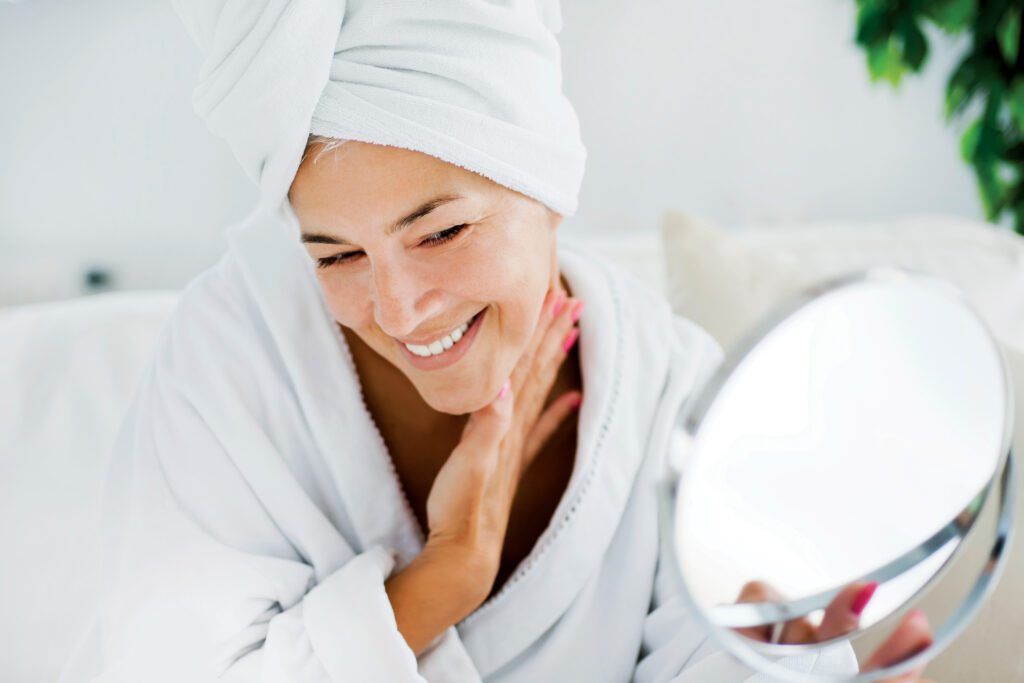Options for Preventing and Reversing Sun Damage
For decades, tanned skin was the picture of glamour, beauty, and health. Women lathered themselves in oil to achieve this enviable look, and pronounced tan lines were worn with pride. Fast-forward to 2018, we all know those hours in the sun weren’t doing us any favors – but how can we make up for years of sun damage?
Ultraviolet radiation is the culprit behind sun-damaged skin and results in wrinkles, uneven skin tone, freckles, and sagging. While it’s impossible to erase all the sun’s damage to your skin, you can work toward a more radiant appearance with these tips.
Preventing Sun Damage
Invest in a quality sunscreen. Using a broad-spectrum sunscreen (SPF 30 or higher) every single day is one of the best things you can do for your skin’s health. Not only does sunscreen protect against UV rays, but it also gives your skin time to heal and helps your immune system repair existing damage. Apply sunscreen 30 minutes before any sun exposure, even if it’s cloudy, and reapply every two hours. You can also purchase cosmetics, including foundation and lip balm, with built-in sunscreen for added protection.
Get your antioxidants. Antioxidants like vitamins C and E can have a major impact if applied topically: They block free radicals from causing damage to your skin. Look for these vitamins in serums or moisturizers. Eating antioxidant-rich foods will protect your skin from the inside out. Olive oil, fish, citrus fruits, leafy greens, nuts, and berries are among the best foods you can eat for skin health.

Before starting any treatment, make an appointment with your dermatologist to discuss your medical history, expectations, and potential risks. And since sun damage can increase your risk of skin cancer, it is recommended that you visit your dermatologist once a year for a skin cancer screening."
Reversing Sun Damage
Reach for retinol. A member of the vitamin A family, this ingredient boosts collagen production. While it’s typically associated with anti-aging, retinol can also help reverse sun damage, from smoothing fine lines to fading dark spots and more. You’ll most often find retinol in serums, both prescription and over-the-counter. Add retinol to your nighttime routine, and you’ll notice a difference in your skin within a few weeks to a few months.
Exfoliate. For sun damaged skin, exfoliation is essential. Gentle exfoliation stimulates the regeneration of new cells and improves the effectiveness of your skincare products, so work up to giving your body a scrub two to three times a week. Remember to moisturize with lotion immediately after exfoliating.
Try a skin-lightening product. Topical creams containing hydroquinone are an effective way to treat dark spots. However, this ingredient can cause skin irritation – always try a spot test before your first application. Licorice root extract is an all-natural alternative that can be applied to the skin directly with a cotton ball.
Consider in-office treatments. Chemical peels and laser therapy are two popular methods for reversing sun damage. A chemical peel is a skin-resurfacing procedure that eradicates damaged cells; the lightest peel is low-risk and involves several treatments, depending on the desired results. For a heftier price tag, laser therapy similarly removes the top layer of damaged skin, but with a laser instead of a chemical solution. Talk with your doctor to determine if you would be a good candidate for either of these treatments.

